Chefs dedicate long hours to crafting dishes that delight guests. The final touch, how food is arranged on the plate, highlights their work. Though often overlooked, good plate presentation enhances the food’s quality and excites the diner’s senses. It should be simple to manage during busy times yet still look elegant and appealing. Think of the plate like a picture, making all the elements come together nicely. Perfecting a plate often takes multiple attempts. Creativity, experimentation, and teamwork help achieve this. Successful plating begins with mastering basic cooking skills, choosing high-quality ingredients, and selecting plates that match the dish’s style. Traditional, modern, and global plating ideas are available here
Elements of the Plate
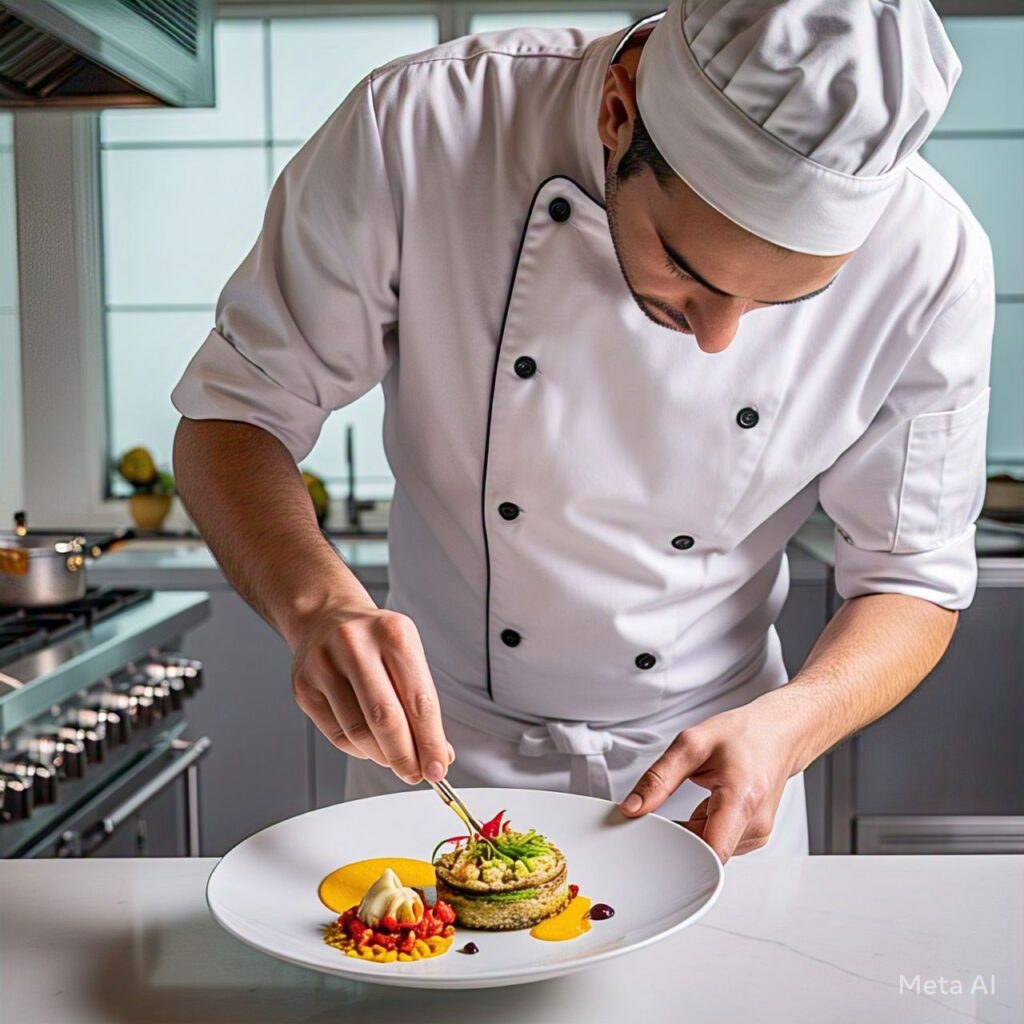
The plate should captivate the senses much like a work of art. A well-planned dish balances flavors, textures, colors, and preparation methods. Blend the components to create harmony. Start with fresh ingredients, precise cuts, and proper cooking to showcase both the food and the chef’s skill. The dish is completed with sauces and complementary ingredients. Garnishes are the finishing touch, adding necessary flavor, texture, and visual appeal.
Main Item
The main item is the centerpiece of the plate, typically meat, fish, or poultry in savory dishes, requiring skill in preparation. Vegetarian options focus on pasta, risotto, grains, and legumes, which should be served promptly to ensure freshness. Appetizers like soups, salads, or small plates need careful plating to maximize their visual impact. Fresh greens, well-balanced soups, and neatly prepared charcuterie are key for starting a meal. Desserts conclude the meal with fresh, rich flavors, varied textures, and bright colors from fruits and herbs for visual appeal. For appetizers and desserts that frame the meal, whether single or multiple focal points, creative plating achieves the best effect.
Supporting Elements

Vegetables and fruits are supporting components, adding vibrant color to contrast with neutral-colored proteins. Precise cuts and controlled techniques keep their appearance elegant and fresh. Varied cooking techniques produce diverse textures, such as purees or crispy fries. Supporting elements add height and variety to the dish, enhancing taste, color, and shape
Sauces
Sauces unify plate components, adding color and gloss. They need the right consistency and texture. Options range from compotes and salsas to classic hollandaise and vinaigrettes. Sauces should be well-distributed on the plate or alongside the dish, providing a flavorful touch without overpowering. Combining sauces, like chocolate with raspberry, can add visual intrigue.
Garnishes
Garnishes finish the plate with visual appeal and should complement the dish, not just act as decoration. They should be integral, like a tuile paired with gelato or tempura-fried lemons with fish
Plate Selection
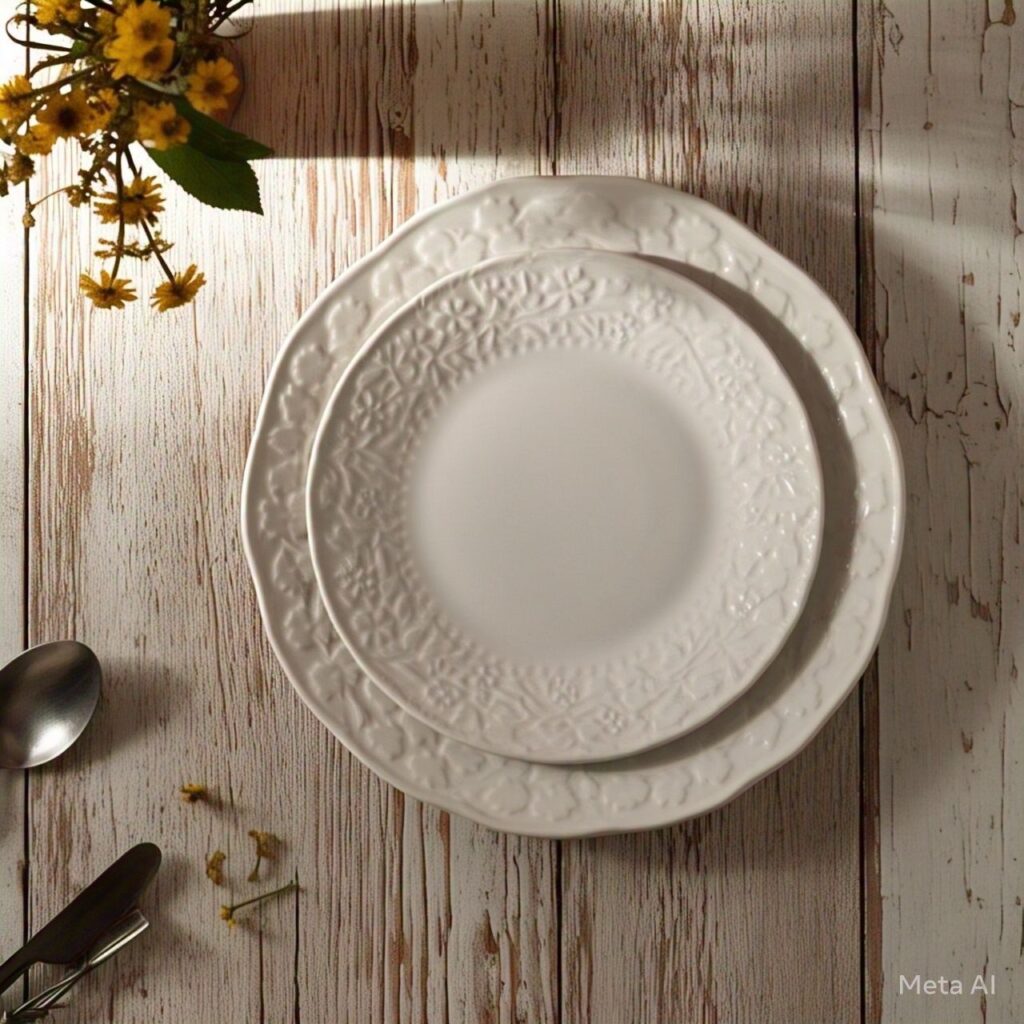
We often speak of plates when plating food, but service ware includes plates of varying sizes, bowls, cups, and other vessels used to hold the food. Plates and serving vessels come in various colors, shapes, and sizes. They may be simple white, starkly black, or earth-tone colors. Other materials may also be incorporated, including metal or wood. The style of dinnerware used depends on the type of operation, whether causal or formal. Plating choices are also influenced by the style of food, the chef’s vision, and the overall image the operation is trying to convey.
Styles
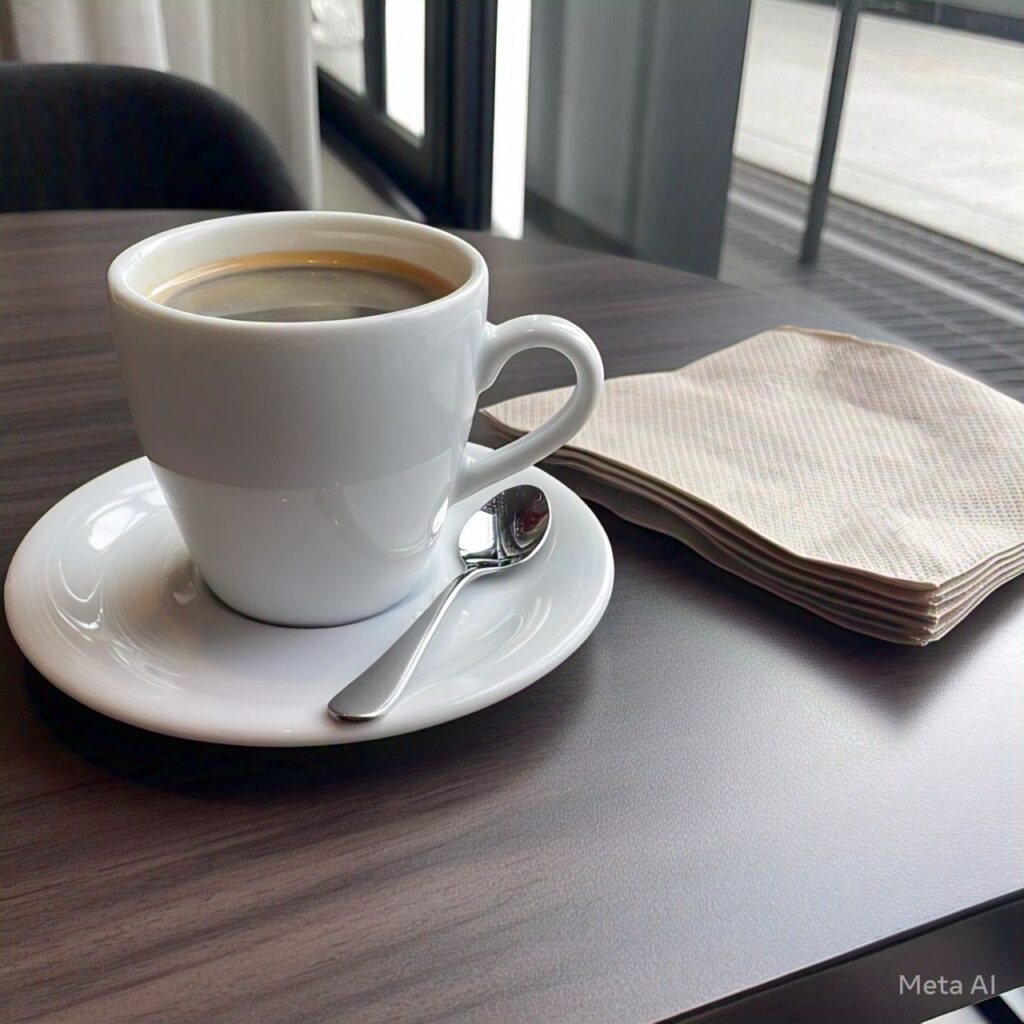
Carefully consider your audience and the venue when choosing the style of service ware. For example, a fine dining restaurant might consider china or porcelain that conveys a sense of elegance. A casual restaurant may choose ceramic or stoneware that matches a more rustic dining experience, while a quick-service operation could opt for economical plastic and melamine. An off-premise catered venue might decide that eco-friendly, disposable, and compostable service ware made of bamboo or other recycled materials is a good fit. Service ware also includes materials like glass, wood, slate, tile, and cast iron or stainless steel metals. Some chefs choose custom-made plates to distinguish their cuisine using natural materials, reclaimed wood, or architecturally unique designs that are as artistic as the food itself. Plates and serviceware come in various geometric shapes, including classic round, square, oval, or rectangular. They may be teardrop-shaped, oblong, or spoon-shaped.
Plate Size

The plate size depends on the restaurant’s style; for example, a family-style restaurant might use larger plates, while a restaurant that features small plates for sharing would logically use small plates. Fine dining restaurants tend to use oversized plates, for example, a 12-inch/30 cm dinner plate or a 7-9 inch/18-23 cm appetizer plate. Oversized plates act as a canvas, providing negative space that frames the items, provides focus, and brings out the colors and characteristics of the food. Large plates also prevent crowding and food overflowing on the rim. The size of the plate affects the perception of quantity and portion size because the larger the plate, the smaller the portion appears to the guest. Smaller plates, bowls, or ramekins can be nested to accent or highlight components. Japanese Kaiseki presentations use dishes of various shapes set on a rectangular underliner that emphasizes an asymmetrical or unbalanced yet organic plate composition.
Colors
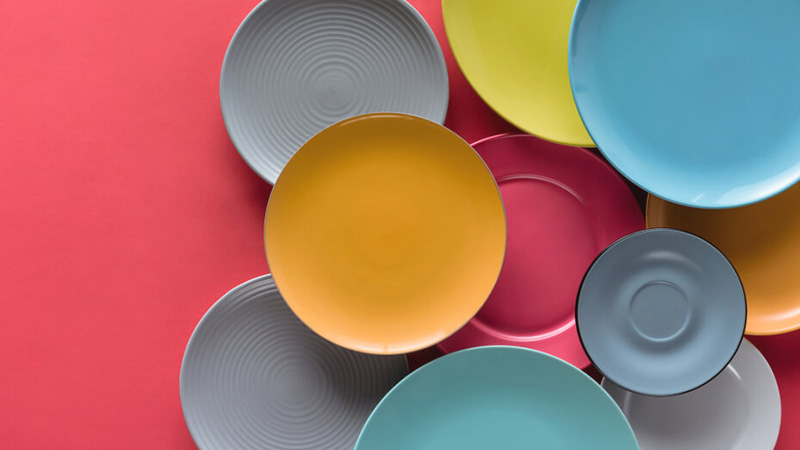
The color of serviceware affects the overall presentation, our taste perceptions, and even our appetite. White plates are a traditional color favored by chefs because they make the vibrant colors of the food more visually appealing to the guests. Chefs use white plates like a blank canvas without concern for color clashes from contrasting plate colors. Black plates provide an opposite contrast that can be used effectively with brightly colored foods. However, earth tones of brown, tan, warm gray, and greens that emulate the natural colors found in dirt, moss, trees, and rocks can be used when paired with the right food colors. Green foods, including salads and vegetables, pair well with yellow plates. Beige foods, including pasta, chicken, and potatoes, pair well with black and brown plates. Red foods, including tomatoes, beef, and red sauces, pair well on white plates, while yellow and orange foods, including eggs, corn, and curries, pair well with blue colors. Solid colors tend to dominate, but some restaurants use patterns as a signature style. Some chefs today commission and even help design custom serving pieces and tableware.
Colors affect how the food appears and how appetizing it looks to us. Foods with high contrast, for example, a grilled steak with asparagus, sweet potato puree, and béarnaise sauce on a white plate, usually appear more appetizing than those with low contrast, for example, pasta with a white sauce on a white plate. Foods served on white plates tend to enhance sweet flavors in food, while black plates bring out more savory flavors, and serving food on a red plate has been shown to reduce the amount diners eat. Service ware should be chosen to match the food, its shapes, and colors.
Tools for Plating
A wide variety of tools are used for plate presentations, including squeeze bottles, spoons, thin-offset spatulas, and brushes for applying sauces on the plate. Tweezers and chopsticks assist in the placement of components and delicate garnishes. Slotted, flexible fish spatulas work well for delicate fish and similar items. Stacking rings and geometric molds help to keep the food contained and add height to the layout. Although tongs are useful for sturdy items like steaks and chops, small serving spoons should be used when plating delicate foods, including vegetables.
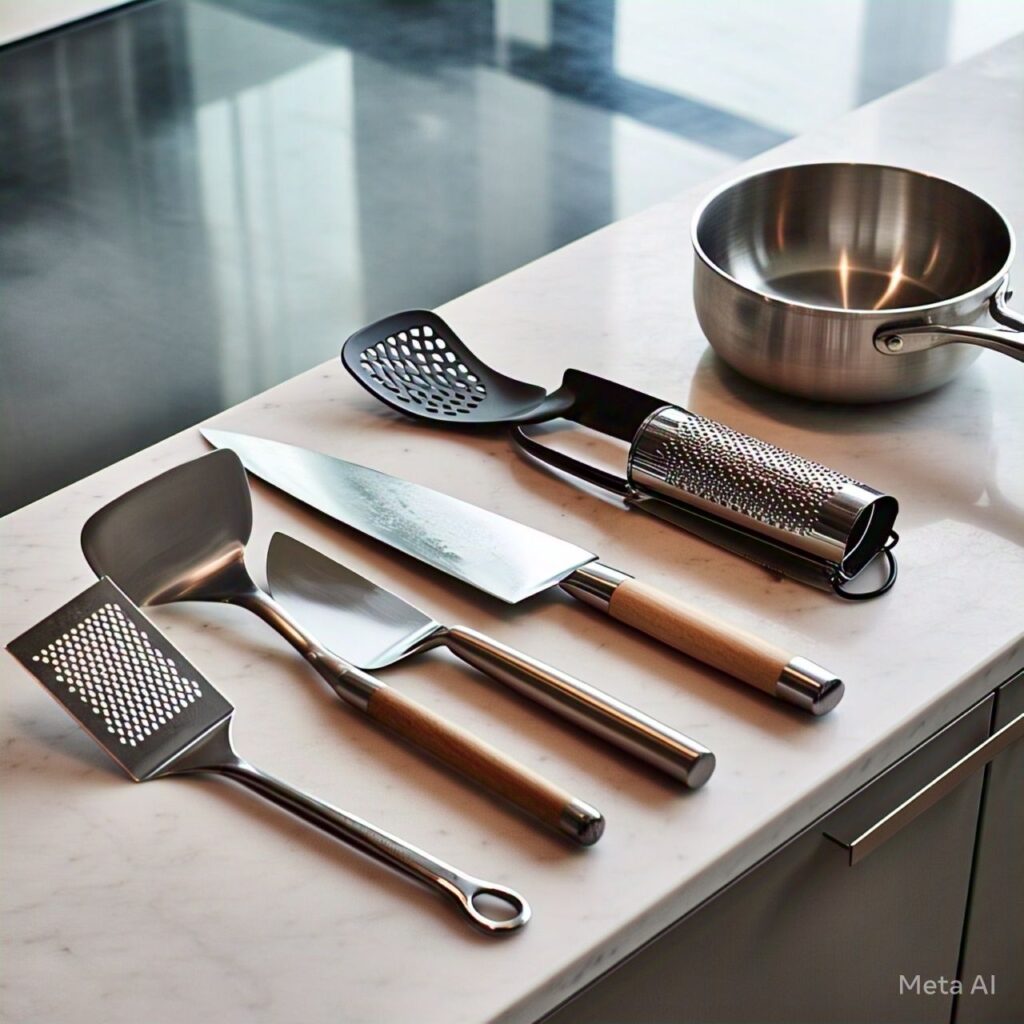
Elementary Plating Tips
Before beginning the plating process, determine the focal point by visualizing how it will appear by drawing out a plate diagram. The focal point should be the highlight of the plate and where the eye is drawn first. Bright or contrasting colors, elevation, and food placement help to highlight items. Usually, our eyes scan a food plate much like a picture, from the lower left to the upper right. Photographers use this idea when setting up a photo, called the rule-of-thirds, which divides a picture into thirds both horizontally and vertically and uses the intersecting lines as focal points. The alignment of the subject should be somewhere at one of these focal points and usually off-center. This template can also be used when apportioning the quantity of food on the plate, which, as a general rule, means no more than 2/3 of the plate should be filled with food while the other 1/3 of the plate is negative or empty space.
Avoid the rim while creating a buffer zone of ½ inch/13 mm of space from the rim to the flat of the plate. Play with symmetry, geometry, and sequencing of the foods. Use color contrasts to add visual impact and interest to the plate. Odd numbers are more pleasing to the eye than even numbers, so three asparagus spears versus four are better. Remember to keep the components of the plate in proportion to each other to balance the presentation. Determine the focal points, lines, and flow as you apportion space to each element. Don’t crowd the plate; empty space will reinforce the focal point. Plate the food simply without too much fuss or busyness.
Practical Plate Presentations
Food plating is about making dishes both practical and functional, ensuring they’re easy to put together even when the kitchen is busy. A plate’s appearance relies on the food’s quality and the kitchen staff’s skills. The food should be well-cooked, correctly seasoned, and look fresh and inviting. Vegetables need to be cleanly and evenly cut, keeping their bright colors. Sauces should have the right thickness, and proteins should be properly browned and cooked to the right level. Start with plates that are either warm for hot food or cold for chilled dishes.
Choose a main item for the plate and build around this central piece. Feature different shapes, textures, colors, and flavors. Molded shapes work well but avoid too many as they can make the plate look artificial. It’s often better to have odd numbers of items for balance. Adding height gives the dish a dynamic feel, almost like a sculpture.
To create height, fluff salad greens or slightly overlap slices of meat. Use sauces to add color. Garnishes should match the dish; skip whole rosemary sprigs. Avoid herbs and spices on the plate’s edge, but fine-chopped herbs that fit the dish can add color tastefully.
Before serving, check the plate for smudges or any extra bits of food and clean it using water with a touch of lemon or vinegar and a clean cloth. Present the plate facing the guest, with the main item at the 6 o’clock position.
Traditional Plating
This method uses a clock face as a guide. Place the main dish between 4 and 8 o’clock. Starches go between 9 and 10, and vegetables between 2 and 3. Pour sauce under or over the main dish. This simple style works if everything is balanced. Use the plate as a frame and aim for the rule-of-thirds. Lean the main dish on the starch for height and use sauce to tie the elements together.
Vertical and Horizontal Lines
Vertical, horizontal, and angled lines provide a neat, organized presentation. These can be made with proteins, vegetables, or sauces. By repeating or overlapping lines, you can create interesting patterns. Avoid monotony by including different shapes and carefully placing garnishes.
Arcs, Swooshes, and Swirls
This style adds height and drama by layering food vertically. Mix shapes and colors to avoid a repetitive look. Offset the main part of the stack, with garnishes and sauces for variety. Use crisp textures at the base, like pastries, and soft textures like purees for support. Break up round or square shapes with pasta, grains, or veggies. Use sauces to accent the dish and avoid a bull’s-eye effect by incorporating various shaped garnishes.
Stacked Plating
Stacked plating brings height and drama to the presentation by layering the components in a vertical style. Items can be layered either free-form or with a mold, but to avoid the cookie-cutter effect, vary the ingredients to create different shapes and colors. The focal point of the stack should be off-center, usually to the left, with added garnishes and sauces to create variety and strength in the presentation. Crisp textures can be added at the base, from pastries or vegetables, or as a garnish, for example, vegetable chips or crisps.
Soft textures, for example, purees of root vegetables, provide a base and double as an anchor to support the main item. Break up round or square geometric shapes with vegetables, pasta, grains, or other items. Sauces provide an accent and help to pull the dish together. Avoid the bull’s-eye effect when stacking by adding garnished elements cut into various shapes or use a saucing technique that breaks the round shape.
Trios
Great for small plates, trios use three small portions to create balance with odd numbers and space. Showcase a seasonal item prepared in three different ways, incorporating hot and cold elements. Trios allow chefs to present diverse creative ideas at once. Arrange them in a line or triangle to highlight each approach.
Deconstructed Plating
Deconstructed plating gives a new look at your traditional dishes. Even when the elements of a dish are separated, they should still hold the same flavors and textures as the classic version. The goal is to create a link between the original and a modern twist. It’s more than just placing each part separately on a plate; there is a main idea that ties them together. Desserts, like strawberry shortcake, are great for this. You can take them apart and put together elements like strawberry sorbet, dried shortcake pieces, crème fraiche sauce, and fresh strawberries.
Free Form Plating
Free form plating blends careful planning with a natural look. It seems random at first but follows some design rules to look natural. Sometimes called organic plating, it respects the idea that ingredients growing in the same season pair well together. This style is flat and not too rigid, giving a relaxed look. Like deconstructed plating, free form allows for a freer layout. Plates made of wood, slate, or stone are used often to add a natural touch

